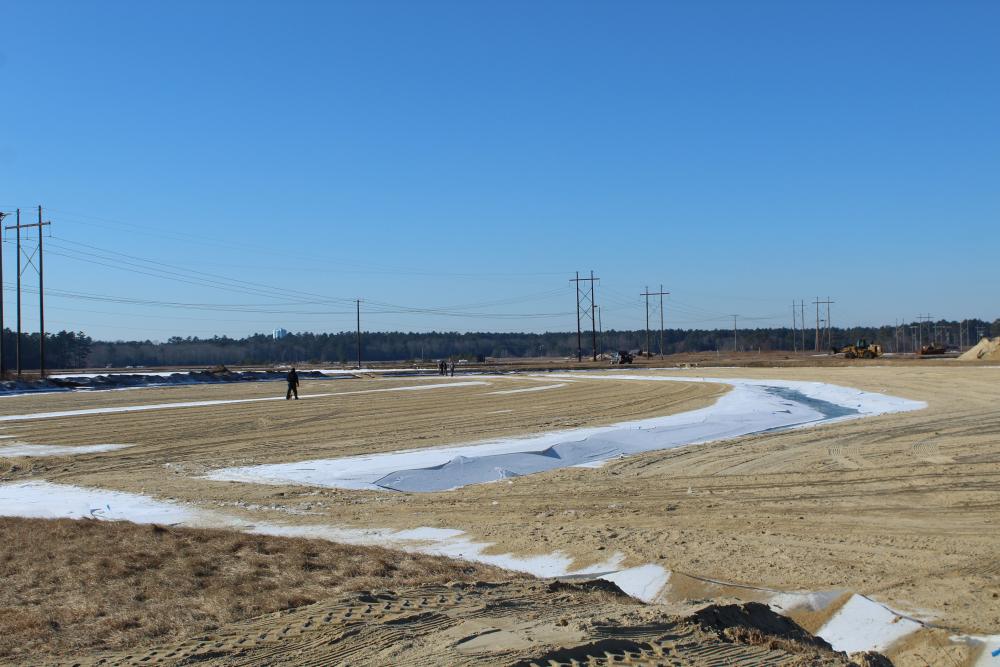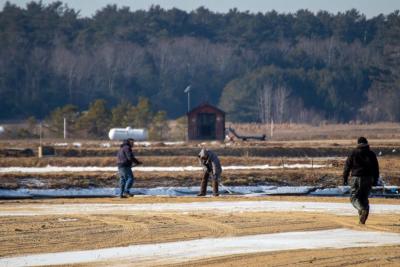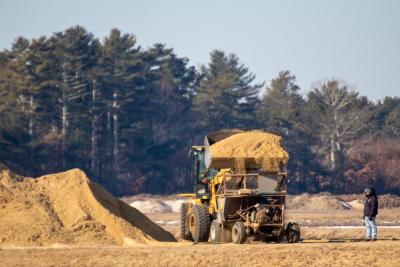Cranberry bogs get a winter makeover
While cranberry bogs currently lack their classic red color and have a layer of ice on top, A.D. Makepeace is still busy working to ensure their bogs are ready for the growing season.
In a process called ice sanding, motorized carts carry large quantities of sand from bog to bog. The carts dump piles of sand onto the frozen bogs and workers spread the piles across the top of the icy, frozen over cranberry bogs.
A.D. Makepeace Vice President of Marketing and Communication Linda Burke said the process ensures the bogs are ready for the spring and summer.
Before workers can step onto the bogs, they are flooded and workers wait for the water to freeze.
If the ice reaches four inches of thickness, workers can walk onto the ice and spread sand by hand. If the ice doesn't reach four inches, Burke said they send a barge onto the partially frozen bogs to spread sand.
Each bog in A.D. Makepeace's 1800 acre system gets sand every three to four years. But Burke said warmer winter temperatures have made this process more challenging.
Due to warmer temperatures, the ice on the bogs has not reached four inches since 2016 and A.D. Makepeace has resorted to the more challenging process of using a barge to spread sand, instead of spreading it by hand.
Burke said using the barge is more difficult because it is harder to move sand from bog to bog this way.
The layer of sand weighs the vines down which helps promote further vine growth and makes the canopy of vines more lush. The reason sand is spread in the winter is so that as the ice melts and the water is absorbed, the sand will be resting on the vines as soon as possible.
The sand also helps protect the vines by killing harmful insects.
"Having the greater canopy of vines means there will be more cranberries," said Burke.

















